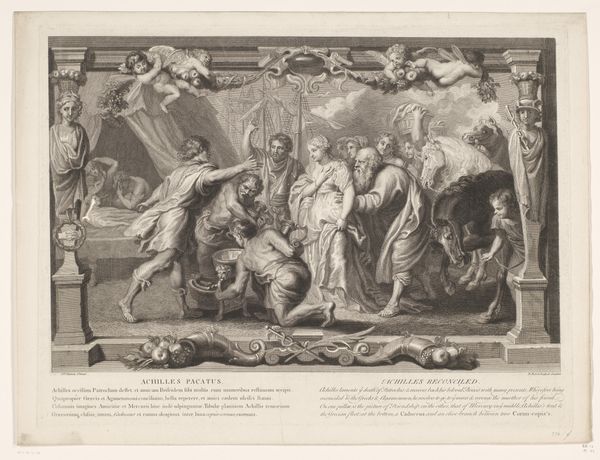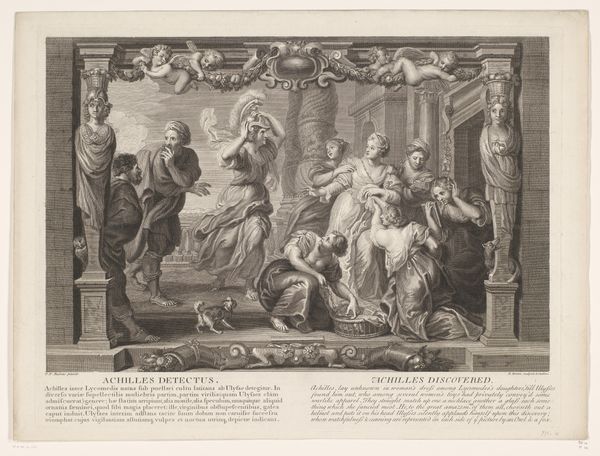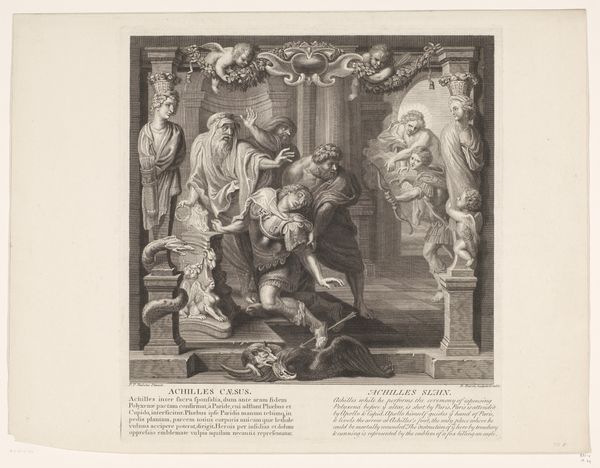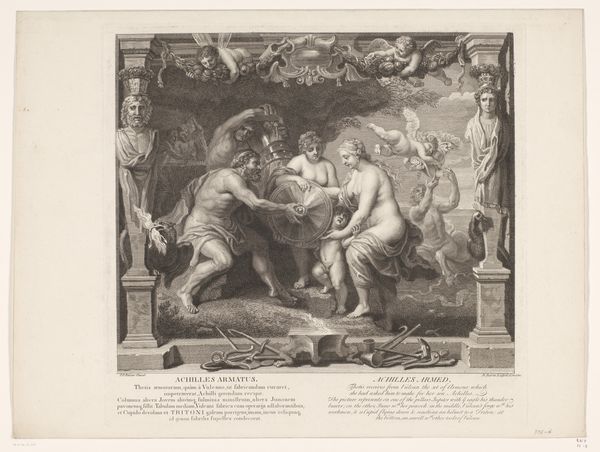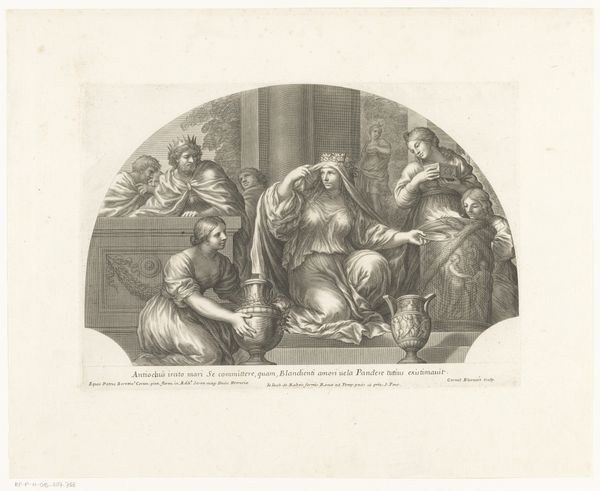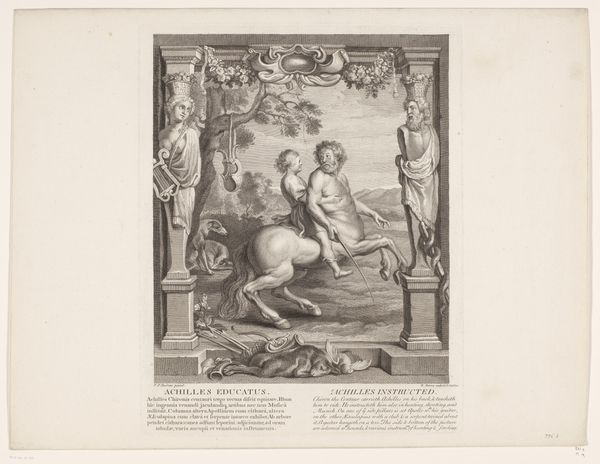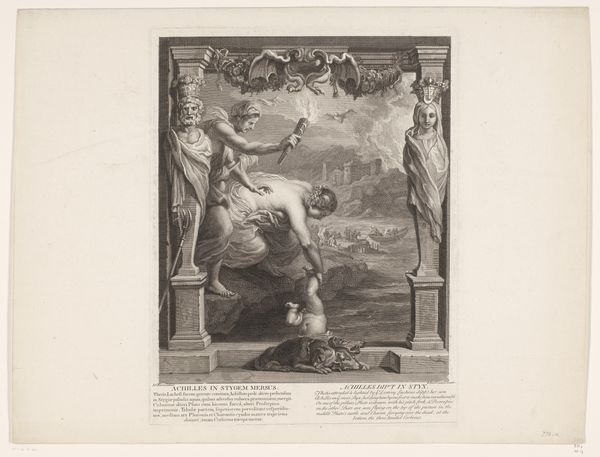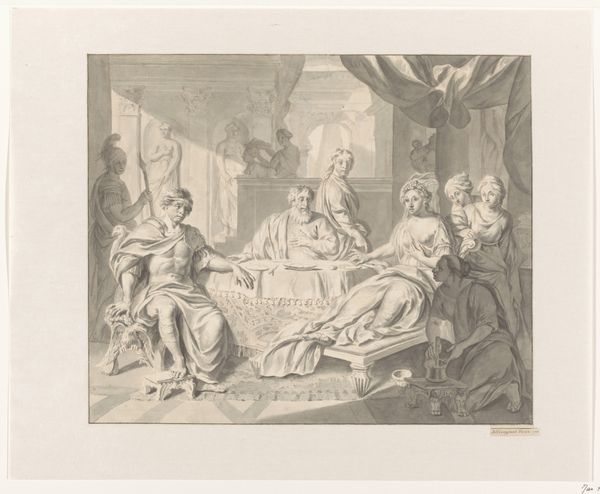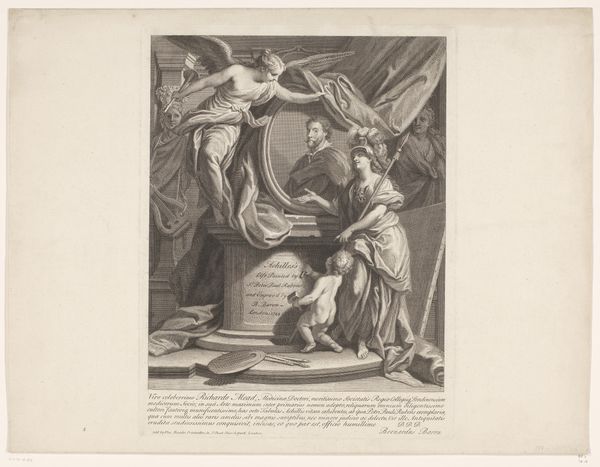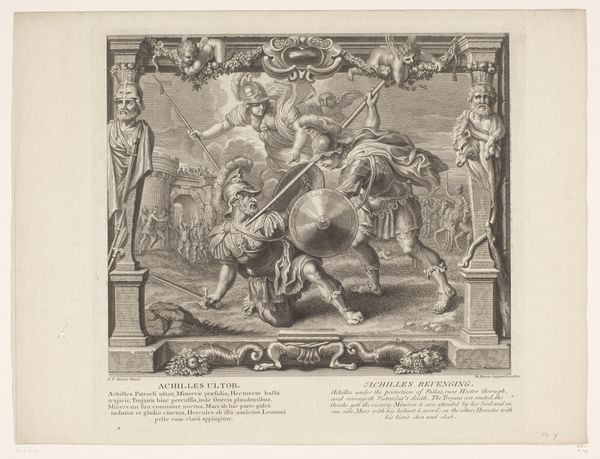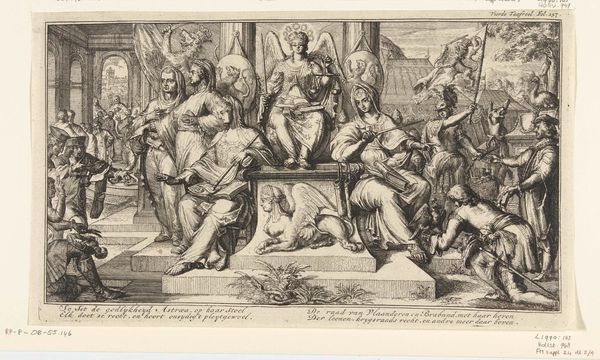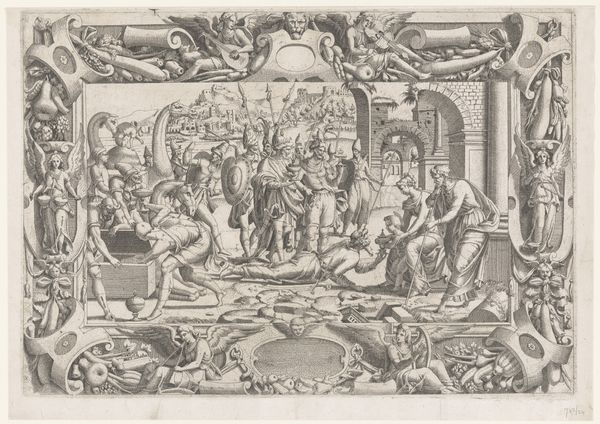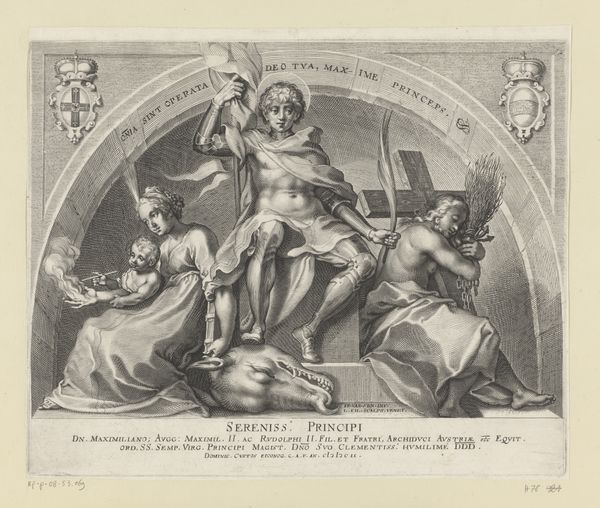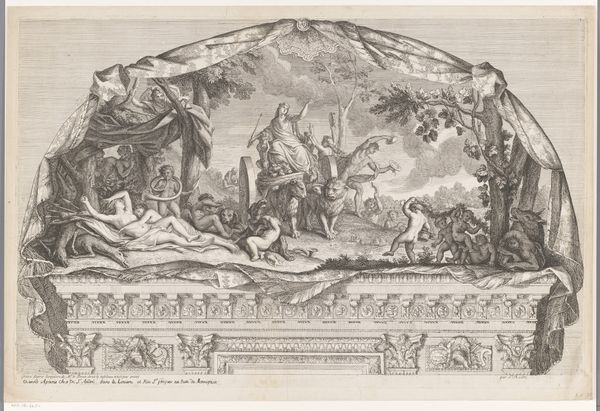
engraving
#
narrative-art
#
baroque
#
old engraving style
#
figuration
#
line
#
history-painting
#
academic-art
#
engraving
Dimensions: height 451 mm, width 412 mm
Copyright: Rijks Museum: Open Domain
Curator: Looking at "Achilles wordt kwaad," an engraving created in 1724 by Bernard Baron, I'm immediately drawn to the emotional tension of the scene. It’s striking. Editor: Yes, that emotional quality is immediately apparent! The line work is incredibly detailed, creating a real sense of Baroque drama, almost theatrical. And what a dynamic composition. I’m curious, though, how this imagery functioned publicly in its time? Curator: Well, the image depicts Achilles in a moment of fury. But it's not just about individual emotion; Achilles, through history and mythology, embodies anger, pride, and a very specific kind of heroic rage, shaping concepts of honor and justice. His fury, the ira, shapes how we think about power. Editor: Right, and engravings like this were often commissioned to propagate certain ideologies and values. The story of Achilles would’ve been incredibly familiar to its audience, particularly elite audiences educated in the classics. Seeing this scene visually reinforces certain expectations and morals about leadership. How much is it shaped by its commissioners and its patrons at the time? Curator: That’s the clever aspect, because by embedding Achilles' anger, even criticism or discomfort with those qualities can become canonized, like a permanent warning. The lion at the bottom looks rather sad though... Editor: Interesting you noticed the lion; there’s that visual cue towards majesty subdued by Achilles' wrath! I tend to read the imagery from a very material place, especially engravings because they're designed for mass consumption and to educate. Where do you see other thematic echoes or interpretations stemming from Baron's composition? Curator: Well, look at the putti or cherubs above Achilles; these add an element of levity that also speaks to higher divine approval or disapproval, creating another layer to Achilles' character—divinely sanctioned anger almost. What’s especially important is how Baroque style elevates psychological truth. Editor: Indeed! This all suggests why artworks such as this one are vital documents to understand society, politics and art's public role across a sweeping timeframe. It definitely resonates today, as we re-examine classical tropes for contemporary use. Curator: Absolutely. Examining the psychological weight layered over imagery creates continuity, while connecting collective experience through artistic output, in every era.
Comments
No comments
Be the first to comment and join the conversation on the ultimate creative platform.
